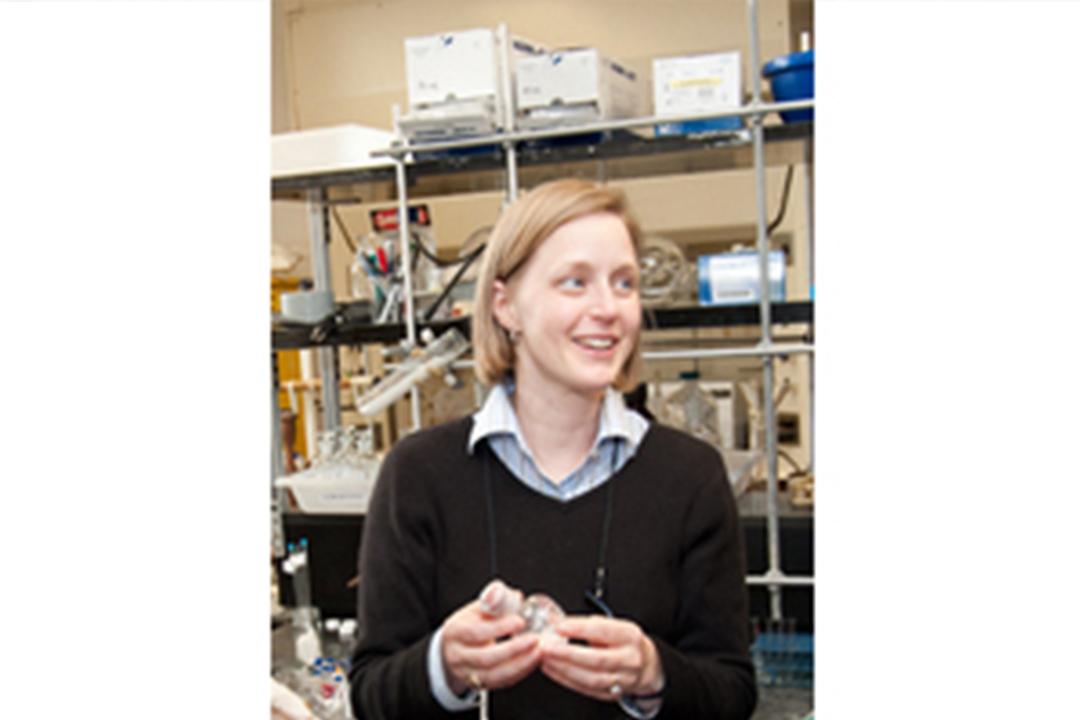Chemistry’s Cynthia Dowd Leads Effort to Identify New Ways to Fight the Disease
In a study led by Assistant Professor of Chemistry Cynthia Dowd, researchers identified a potential new route for attacking tuberculosis that may hold promise against drug-resistant strains of the disease and even dormant TB infections. The team, which included Emma Edelstein, BS ’13, and Emily Jackson, Ph.D. ’13, designed and tested molecules that work like a chemical Trojan Horse, sneaking past the defenses of TB-causing bacterial cells and, once inside, blocking functions essential for survival. Their work was published online this summer in the journal MedChemComm.
“TB remains a huge threat to global public health,” said Dowd. “New therapeutics are essential for combating drug resistance and staying one step ahead of the bug, so to speak. Our work seeks to validate a drug target that is not used by current drugs.”
“Our hope is that by targeting that enzyme, we will kill the bug,” added Jackson. “The ultimate goal, of course, is curing TB.”
The impact of tuberculosis—a chronic bacterial infection, usually of the lungs—hangs over thousands in the United States and millions worldwide. Though rates are improving, there were an estimated 8.7 million new cases of TB in 2011 and 1.4 million deaths, according to the World Health Organization. As much as a third of the world population is thought to have latent TB, an inactive infection that carries no TB symptoms and cannot be spread unless it becomes activated.
In the new study, the chemicals targeted an enzyme known by the abbreviation Dxr. Enzymes drive life-sustaining chemical reactions inside cells and are common targets for drug treatments. Operating like a lock-and-key mechanism, enzymes like Dxr have openings that fit correspondingly-shaped molecules. Once they attach to the enzyme, molecules are broken down or combined to forge yet other molecules for use inside the cell.
Enzyme inhibitors, like those created by the research team, act as false keys and block that process. “The key doesn’t open the lock, the key gums up the lock,” explained Dowd. “It occupies the lock so the right key can’t fit in there.”
The team set out to hamper two of those locks, or binding sites, on the Dxr enzyme: one for fosmidmycin, a proven disruptor of Dxr that is rebuffed by the cell wall of the bacteria that causes TB; and the other the binding site for a molecule called NADPH.
Building on their previous work showing that a molecule can be chemically disguised to gain entry into the TB cell, the researchers mimicked both fosmidmycin and NADPH in a masked, two-pronged key that stretched from one binding site to the other. The two-pronged approach, rather than two separated chemicals, can offer a tighter fit into the binding sites.
The work was a success, and a surprising one at that—the false key for NADPH actually missed its mark and landed in another, unrecognized binding site on the enzyme.
According to Dowd, the discovery marks the first time the Dxr enzyme has been used to kill TB, lending hope that the finding could be used to sidestep resistance TB has built up along other drug pathways. And since Dxr is involved in basic, root-level functions of cells, it may also prove useful against dormant TB infections.
The team, which includes researchers from the National Institute of Allergy and Infectious Diseases at the National Institutes of Health, will now try to determine exactly how the chemical works and how to sharpen its potency.


